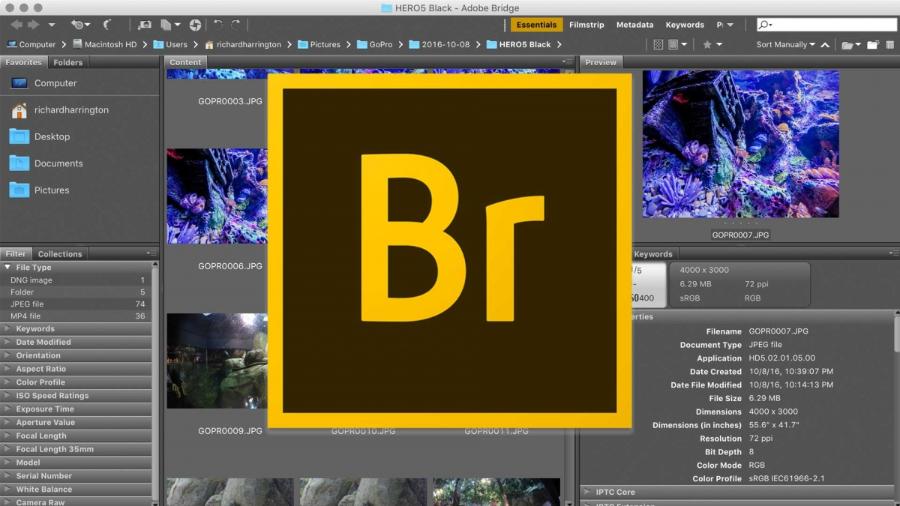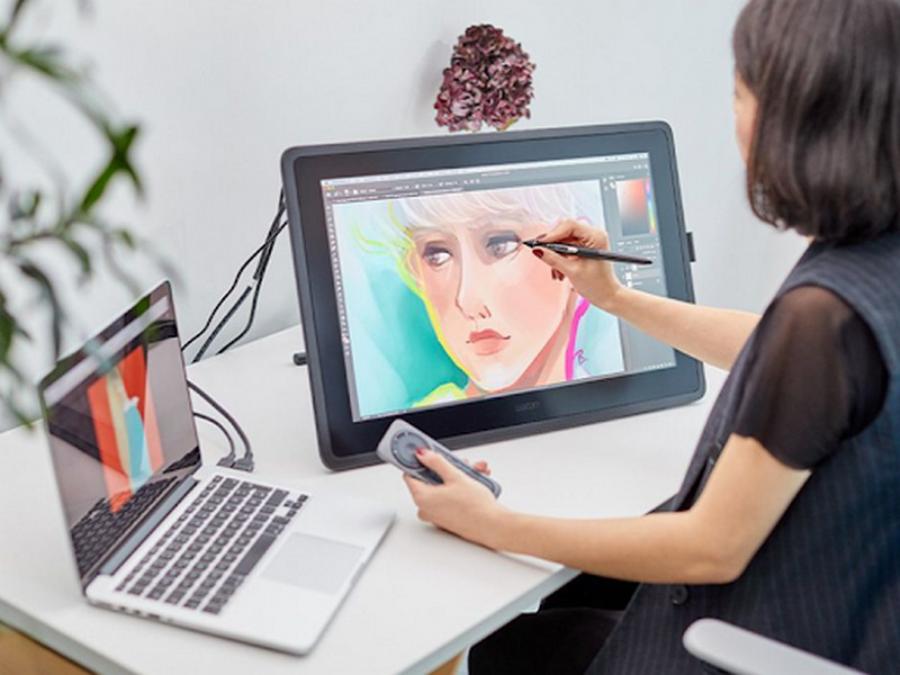Best Selling Products
Close-up Photography: Exploring the Magical World of Tiny Things
Nội dung
Explore the art of close-up photography, learn close-up photography techniques, tips and tricks to help you create impressive, sharp and detailed photos.

Close-up photography is a fascinating field, giving us the opportunity to explore small details that are invisible to the naked eye. Whether it is flower petals, insects or inanimate objects, each close-up photo opens up a new and impressive world. In this article, sadesign will explore the art of close-up photography with you, from basic techniques to tips to help you create sharp and attractive photos.
1. What is Close-Up Photography? Definition and Differences
Close-up photography is a photographic technique in which the subject fills a large portion of the frame, showing small details clearly and sharply. The main goal of close-up photography is to highlight details that are often overlooked in regular photographs, giving the viewer a new and interesting perspective.
.jpg)
This technique is often used to photograph small objects such as insects, flowers, or surface textures. What differentiates macro photography from other types of photography is the ability to magnify and reproduce details at a high level, often requiring specialized equipment such as macro lenses or supporting accessories. Macro photography not only requires sophisticated lighting and composition techniques, but also requires patience and creativity from the photographer to achieve impressive and unique results.
The Difference Between Close-up, Macro and Micro Photography:
Although often used interchangeably, these three terms have subtle differences in magnification ratio:
Close-up Photography: Usually refers to taking pictures at a close distance, making the subject larger than its actual size on the camera sensor. The magnification ratio is usually between 1:10 and 1:1. This means that the size of the subject on the sensor can be equal to or less than 10 times its actual size.
Macro Photography: A more strict definition, requiring a magnification ratio of 1:1 or greater. This means that the size of the subject on the camera sensor is equal to or greater than its actual size. Macro photography is often used to photograph very small subjects such as insects, flower pistils, or other microscopic details.
Micro Photography: Involves using a microscope to photograph extremely small objects, often exceeding a magnification ratio of 20:1. This is a more specialized field and is often used in scientific research.
2. Essential Equipment for Close-Up Photography
To get started on your macro photography journey, you’ll need some basic equipment. However, you don’t have to invest in expensive equipment right from the start. Here are your options, from basic to advanced:
.jpg)
a) Lens:
Dedicated Macro Lenses: These are ideal for close-up and macro photography. They are specifically designed to provide 1:1 or higher magnification, extremely close focusing capabilities, and excellent sharpness across the frame. Common focal lengths for macro lenses include 50mm, 60mm, 90mm, 100mm, 105mm, and 180mm. Each focal length has its own advantages and disadvantages in terms of working distance and depth of field.
Lenses often come with accessories: If you don't want to invest in a dedicated macro lens, you can use your existing lens with the following accessories:
Extension Tubes: These are hollow tubes that fit between the camera body and the lens, increasing the distance between the lens and the sensor, thereby reducing the minimum focus distance and increasing the magnification ratio. They do not contain lens elements and therefore do not affect the optical quality of the lens.
Close-up Lenses (or Diopters): These are lenses that attach to the front of your existing lens (similar to a filter), reducing the minimum focusing distance and increasing the ability to shoot close-ups. However, optical quality may be slightly reduced, especially at the edges of the frame.
Reversing Ring: This accessory allows you to mount a standard lens upside down on your camera body. This can give you impressive magnification ratios, but you lose automatic aperture control and need to focus manually.
b) Camera Body:
Most DSLRs, mirrorless cameras, or even some high-end compact cameras can be used for macro photography. More important is the ability to control aperture, shutter speed, and ISO precisely. Cameras with larger sensors (e.g. full-frame) can provide shallower depth of field and better ISO performance, but crop sensor (APS-C) cameras can provide a higher effective magnification ratio due to the crop factor.
c) Tripod:
Stabilization is key in macro photography, especially when shooting at high magnifications or in low light conditions. A tripod helps to keep the camera steady, preventing camera shake and ensuring maximum sharpness in the image. A sturdy tripod with a flexible ball head is helpful.
d) Light:
Controlling light is very important in close-up photography to highlight details and create desired effects.
Natural Light: Soft natural light, especially early morning or late afternoon, is often ideal for outdoor close-up photography.
Flash: Flash can help provide adequate light in low light conditions or to freeze the motion of a subject. Ring flashes or twin flashes are specifically designed for close-up photography, providing even lighting and minimizing harsh shadows.
Diffusers and Reflectors: These accessories help soften harsh light or bounce light onto dark areas of a subject.
e) Other Useful Accessories:
Soft release cable or remote control: Helps avoid camera shake when pressing the shutter button.
Angle Finder: Useful when shooting subjects low to the ground.
Small table or beanbag: Helps stabilize the camera when there is no tripod.
Tweezers and small tools: To adjust the position of an object (e.g. removing dry leaves from a flower).
Additionally, a tripod will help keep the camera steady, especially in low light conditions or when long exposure times are required. Macro flashes or dedicated lighting systems also play an important role in controlling light, avoiding unwanted shadows. Finally, accessories such as extension tubes or diffusers will help optimize image quality, resulting in impressive and professional close-up works.
3. Effective Close-Up Photography Techniques
Macro photography is an important technique in photography that requires concentration and skill to create highly detailed images. Macro photography requires meticulousness and patience. Here are some important techniques to help you take impressive macro photos:
.jpg)
a) Precise Focus:
Manual Focus: Often the best option for close-up photography, especially at high magnifications where autofocus systems can struggle. Use Live View mode and zoom in to ensure the focus falls exactly where you want it.
Focus Stacking: When shooting at high magnifications, the depth of field is often very shallow, with only a very small portion of the subject in focus. Focus stacking involves taking multiple photos with different focus points on the subject, then combining them using software to create a single photo with a greater depth of field, with the entire subject in sharp focus.
Lighting is also key, so use natural light or specialized light sources to highlight your subject without creating shadows or losing detail. Adjusting your aperture and shutter speed is also important to control depth of field and avoid camera shake.
b) Aperture Control:
Depth of Field: Aperture directly affects depth of field. Large apertures (small f-numbers) create shallow depth of field, blurring the background and making the subject stand out. Small apertures (large f-numbers) create deeper depth of field, keeping more of the subject and background sharp.
Choosing the right aperture: Depending on the purpose and subject of the photo, you need to choose the right aperture. For small details or to highlight a specific part, a large aperture can be effective. To show more details of the subject, a smaller aperture is more suitable.
c) Lighting Management:
Take advantage of natural light: Observe the direction and intensity of natural light to create the best effect for your photo. Oblique light can highlight the texture and shape of your subject.
Use flash creatively: Avoid using direct flash, as it can create harsh lighting and harsh shadows. Use a diffuser or reflector to soften the light. A ring flash or dual flash can provide more even, controlled lighting for close-up subjects.
d) Composition:
Rule of Thirds: Place the main subject or its important points along lines or at intersections of a grid that divides the frame into three equal parts horizontally and vertically.
Leading Lines: Use lines within the frame to lead the viewer's eye to the main subject.
Negative Space: Leave empty space around an object to create focus and a sense of balance.
Shooting angles: Experiment with different shooting angles (top down, eye level, bottom up) to get unique perspectives.
Fill the frame: In close-up photography, filling the frame with the subject is often effective, bringing out the details.
e) Patience and Observation:
Macro photography often requires patience, waiting for the right light, a well-positioned subject, or a moment when the wind dies down. Closely observing your subject will help you find interesting angles and details to capture.
Additionally, using a tripod or stabilizer will help to sharpen the image. Finally, the photographer needs to pay attention to the composition and angle to create a harmonious, attractive photo that conveys the desired message.
4. Advanced Tips and Tricks in Macro Photography
Macro photography is a creative field that requires meticulousness and high technique to capture subtle details that are difficult to see with the naked eye. To improve your skills in this field, you need to pay attention to the effective use of natural and artificial light, and take advantage of supporting tools such as macro lenses or extension rings to increase magnification. To improve your macro photography skills, consider the following tips and tricks:
.jpg)
Keep the camera steady: Use a tripod or other support to avoid camera shake, especially when shooting at high magnification ratios or slow shutter speeds.
Use a soft release cable or timer: Avoid touching the shutter button directly to minimize camera shake.
Shoot in Manual Mode: Gives you complete control over aperture, shutter speed and ISO, helping you achieve the results you want.
Look for a simple background: A simple, undistracting background will help highlight the main subject.
Pay attention to the smallest details: In macro photography, the smallest details can make a big difference.
Experiment with different angles and compositions: Don't be afraid to try new approaches to find the most unique perspective.
Post-editing: Use photo editing software to fine-tune the brightness, contrast, color, and sharpness of your photo.
Explore different subjects: The natural world and everyday objects are full of interesting subjects to photograph close-up.
Join a photography community: Learn from others and share your work to get feedback and improve your skills.
5. Interesting Subjects for Close-Up Photography
Macro photography is a creative and meticulous area of photography that offers the opportunity to explore the beauty of the details of the subjects around you. Some interesting subjects for macro photography include flowers with their delicate lines, insects with their unique structures, or everyday objects such as water droplets, wood grain, or the surface texture of metal. The world around us is full of great subjects for practicing macro photography:
Insects: With unique shapes, complex eyes and exquisite details on their bodies.
Flowers and Plants: From soft petals, delicate pistils to intricate leaf veins.
Water Drops: Light refracted through water drops can create unique color and visual effects.
Surface textures: Wood, stone, metal, fabric... all have interesting textures when viewed up close.
Small objects: Watches, jewelry, antiques... with intricate mechanical details or patterns.
Food: The details on the surface of fruits, vegetables or dishes can become fascinating when photographed close-up.
At the same time, controlling the depth of field (DOF) through the aperture is also important to highlight the subject and blur the background. Always pay attention to composition, look for unique angles and don't be afraid to experiment with elements such as color, texture and light to create impressive photos. Additionally, using a tripod or stabilizer will help you avoid shaking, especially when shooting at slow shutter speeds. Finally, don't forget to post-process your images to optimize color and detail to bring your photos to perfection.
6. Conclusion
Macro photography is a never-ending journey of discovery, revealing a new and surprising world all around us. With patience, skill and a little creativity, you can capture beautiful moments and hidden details that the naked eye misses. Start exploring this magical miniature world and share unique stories through your macro photography. Wishing you exciting and successful photography experiences!












































